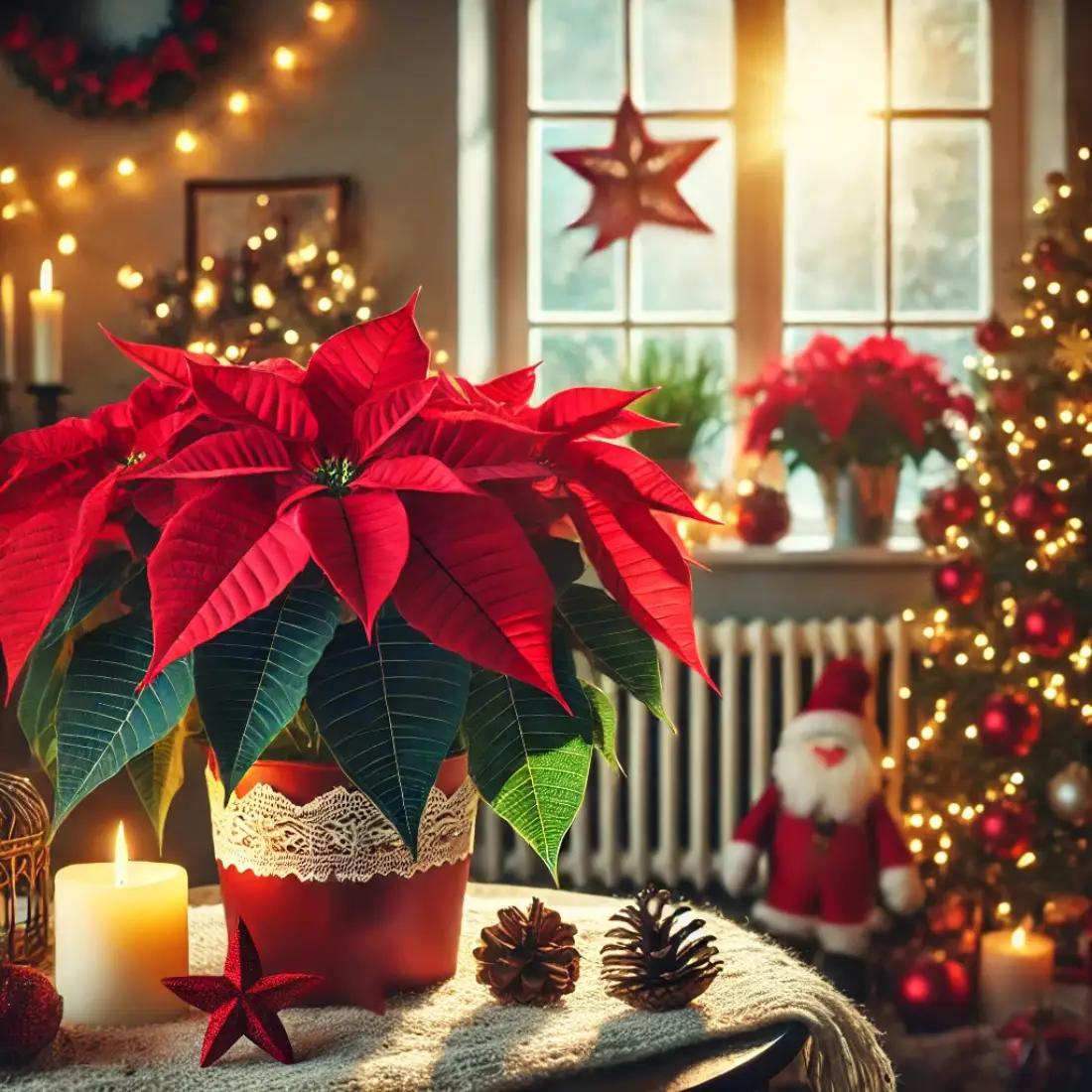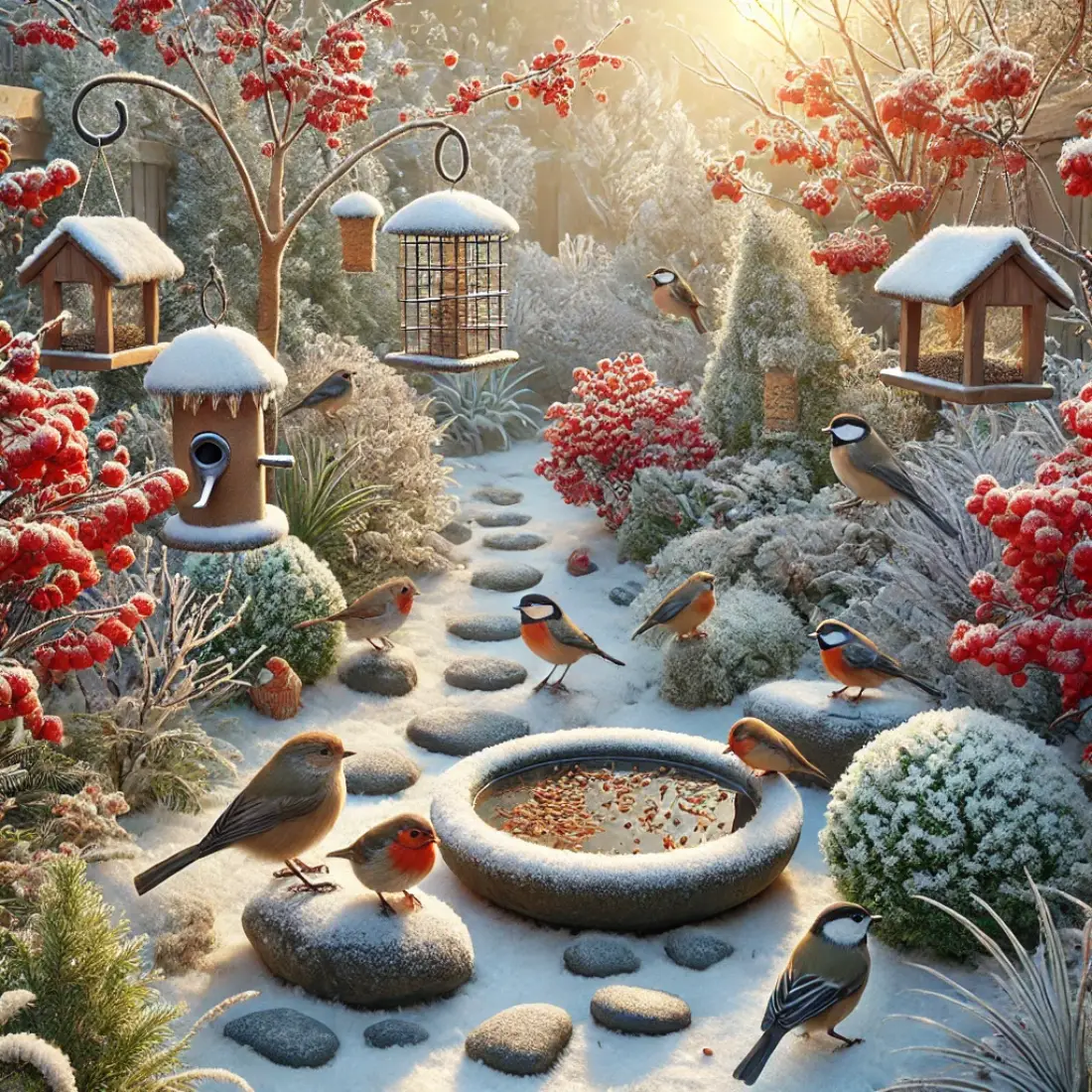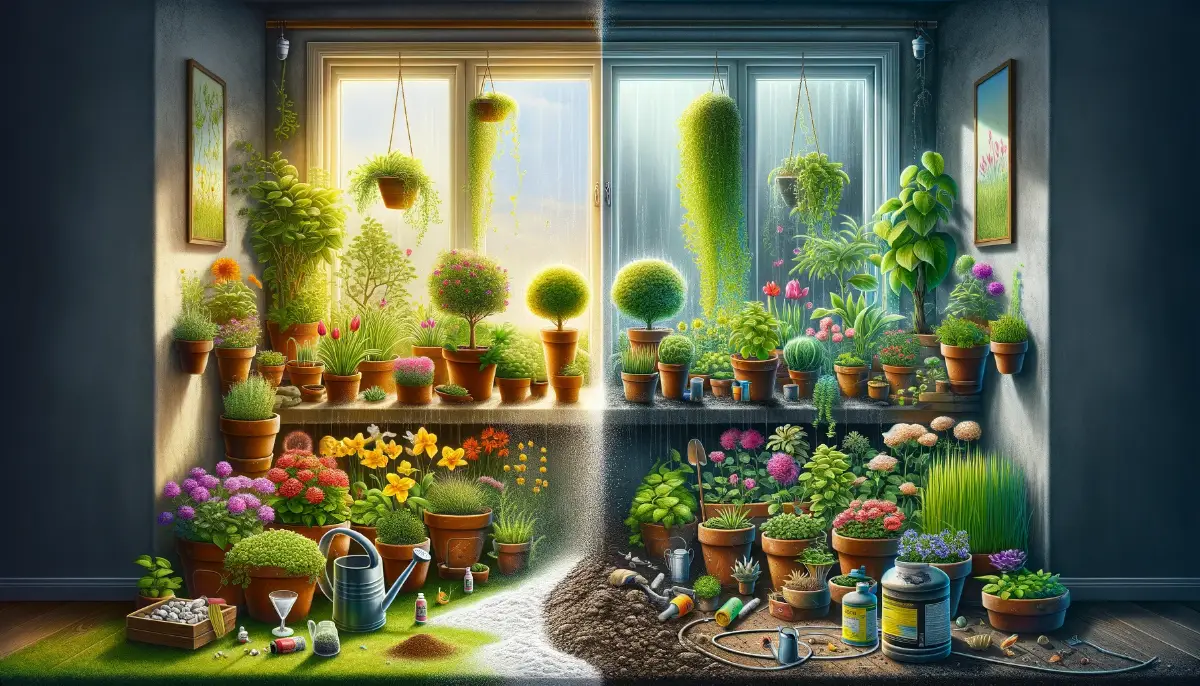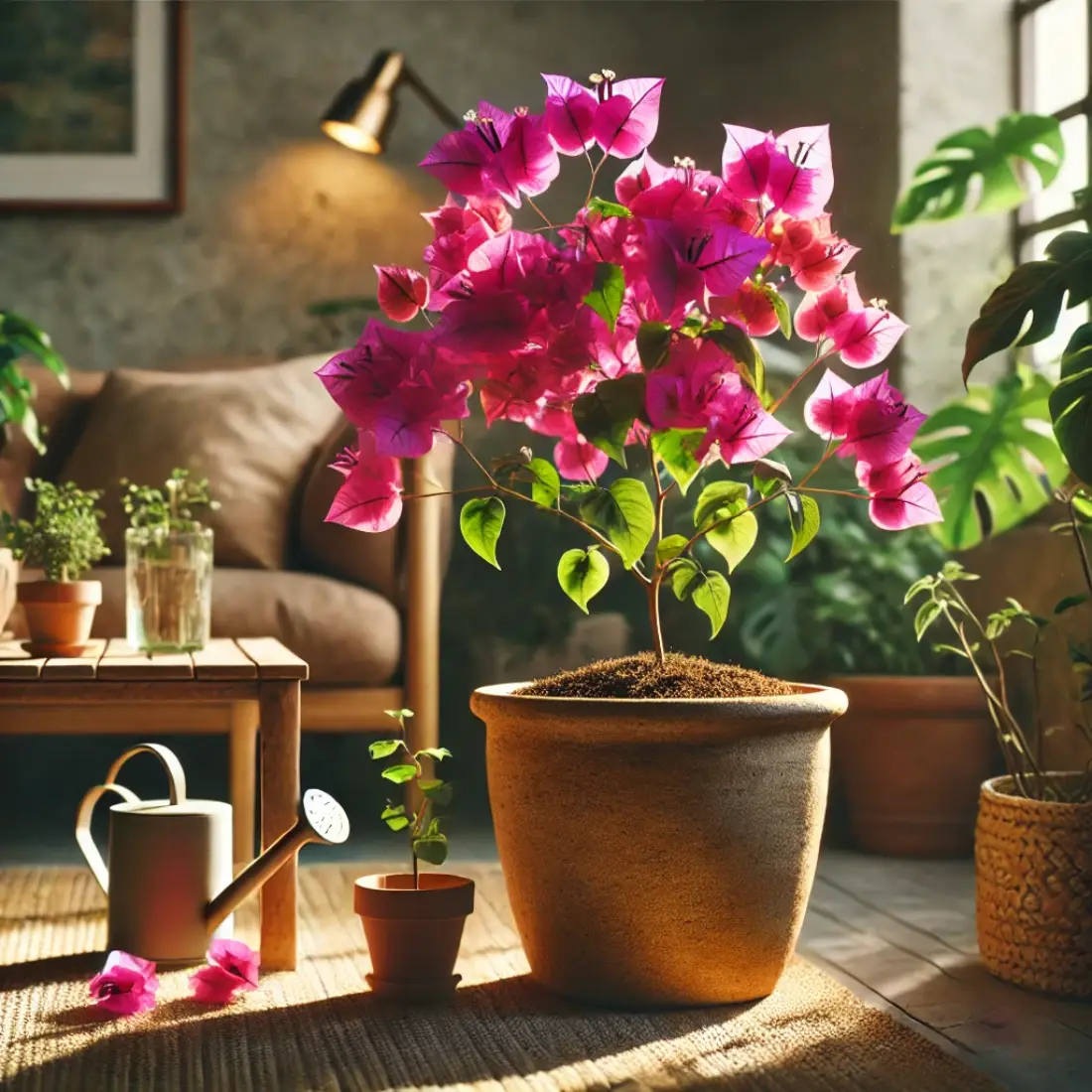Poinsettias are as much a part of Christmas as twinkling lights and cozy firesides, with their vibrant red bracts adding warmth and holiday spirit to any room. However, keeping a poinsettia looking lively and full throughout the holiday season — and even into the new year — takes a bit of know-how.
With the right care, you can help your poinsettia thrive all season long and maybe even get it to bloom again next year.
- Choose a Healthy Plant: Start with a poinsettia that has full, colorful bracts and bright green leaves.
- Find the Right Spot: Place it in bright, indirect sunlight and keep it away from drafts and extreme temperatures.
- Water Wisely: Keep soil evenly moist but avoid over-watering, as standing water can cause root rot.
- Temperature and Humidity: Aim for a room temperature between 60-70°F (16–21°C) and moderate humidity.
- Long-Term Care: With the right attention, your poinsettia can survive past the holidays and may even re-bloom next season.
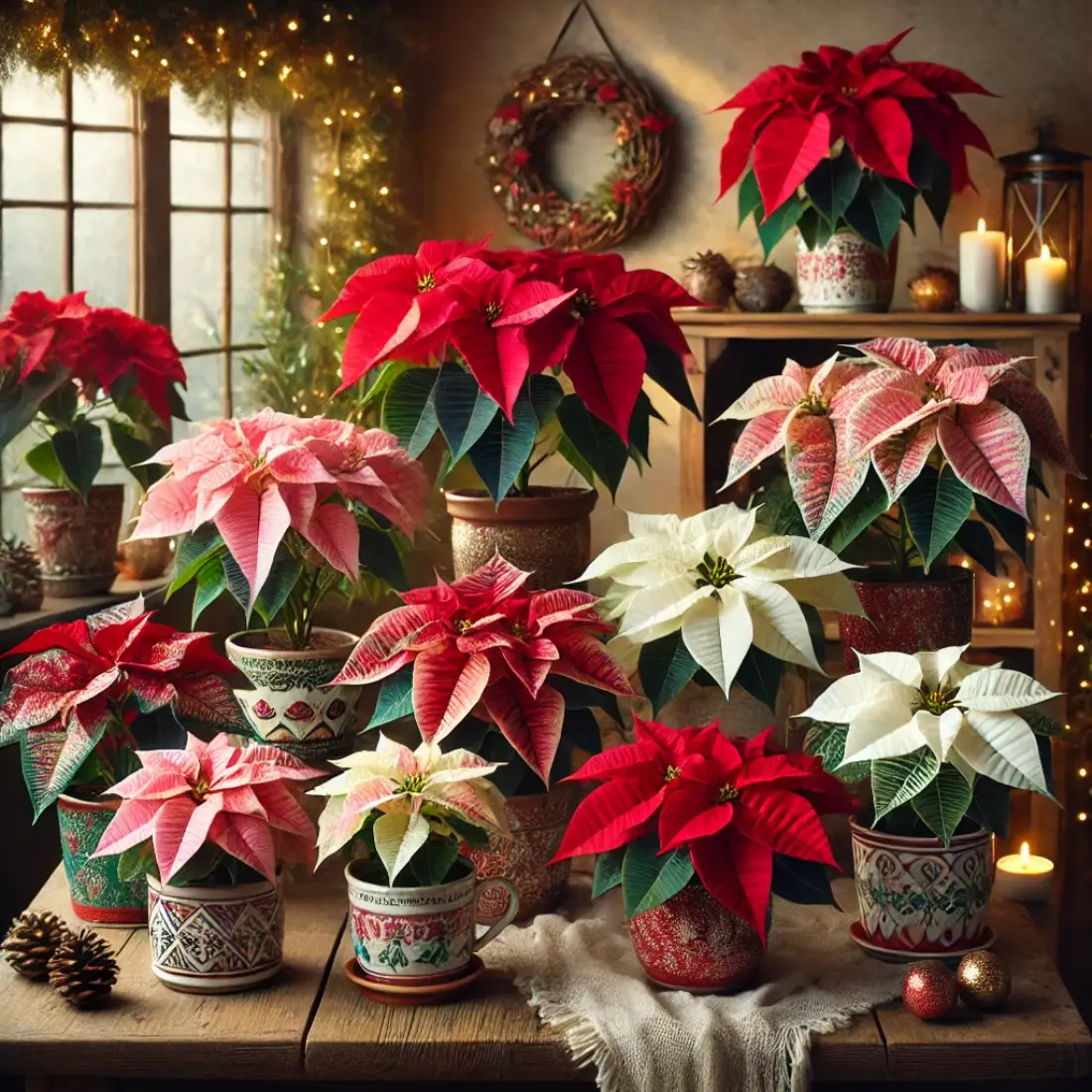
Essential Poinsettia Care Tips to Keep Your Plant Thriving
Selecting the Perfect Poinsettia
Starting with a healthy plant makes everything easier. When choosing a poinsettia, look for bright and colorful bracts (the colored parts we often think of as petals) that are full and unblemished. Healthy bracts should be deep red, pink, or white, depending on the variety, and free from any spots or wilting.
Here are some tips to help select the perfect poinsettia:
- Check for lush, green leaves that are free of brown or yellow spots.
- Avoid plants with wilting or drooping leaves, which can be signs of over-watering or stress.
- Choose a well-balanced plant with leaves all around it; a sparse or lopsided plant may have been mishandled.
Ideal Placement: Where to Keep Your Poinsettia
Where you place your poinsettia makes a big difference in its health. Poinsettias love bright, indirect light, so pick a spot that gets plenty of natural light but isn’t directly in the sun.
Keep the following in mind for ideal placement:
- Avoid cold drafts from doors and windows, as well as heat sources like radiators or fireplaces.
- Try to keep the room temperature consistent. Poinsettias do best in temperatures between 60-70°F (16–21°C) during the day and a bit cooler at night.
- Move your plant at night to a cooler area (around 55-60°F) if possible, as poinsettias prefer this slight drop in temperature overnight.
Watering Poinsettias: Balancing Moisture
One of the biggest mistakes people make with poinsettias is over-watering or under-watering. Poinsettias like their soil to stay evenly moist, but too much water can cause root rot, while too little can lead to drooping leaves.
Here’s how to water your poinsettia effectively:
- Check the soil regularly by sticking a finger about an inch deep. If it feels dry, it’s time to water.
- Water thoroughly so the soil is evenly moist, but make sure to drain any excess water. If the plant sits in standing water, root rot can set in quickly.
- Avoid splashing the leaves as much as possible, as this can cause leaf spots.
Temperature and Humidity Requirements
Poinsettias are tropical plants, which means they love moderate temperatures and humidity. If your home is dry, especially in winter, you might want to increase the humidity around your plant.
Here’s how to manage temperature and humidity for a healthier poinsettia:
- Keep the plant in a room with a temperature range of 60-70°F and avoid exposing it to sudden drops in temperature.
- Use a humidity tray or a room humidifier if your home is very dry. A simple humidity tray can be made by placing the poinsettia pot on a shallow dish filled with water and pebbles. The water will evaporate, raising the humidity around the plant.
- Avoid placing it near drafty windows, cold air vents, or fireplaces.
Feeding and Fertilizing Your Poinsettia
While poinsettias don’t need much fertilizer during the holiday season, a bit of plant food can give them a boost as the blooms start to fade.
To fertilize your poinsettia:
- Apply a balanced, organic fertilizer every two to three weeks after the holidays if you’re planning to keep it alive for next year.
- For poinsettias, worm castings and compost tea are often the best organic fertilizers, providing balanced nutrients and gentle feeding ideal for indoor plants.
- Only fertilize when you see new growth appearing, as poinsettias don’t need much food while in bloom.
- Avoid over-fertilizing, which can cause yellowing leaves and weak growth.
Extending Poinsettia Life Beyond the Holidays
Repotting and Pruning Your Poinsettia
Once the holidays are over, you might want to consider repotting your poinsettia to give it a fresh start. This can also help encourage new growth if you plan to keep it for the next holiday season.
- Prune the poinsettia back to about six inches in height once the bracts begin to fade. This will help the plant grow stronger and more compact.
- Repot it in spring using a fresh potting mix that drains well. Poinsettias don’t like to sit in water, so make sure the new pot has good drainage.
Transitioning Your Poinsettia Outdoors in Spring
If you live in a mild climate, you may be able to move your poinsettia outdoors in the spring. This can give it access to more natural light and fresh air, helping it stay healthy.
Here’s how to transition your poinsettia to outdoor conditions:
- Wait until the last frost has passed, as poinsettias are sensitive to cold.
- Move it outside gradually, starting with a shady spot and slowly increasing its exposure to sunlight.
- Adjust your watering routine as the outdoor conditions may require more frequent watering, especially if the plant is getting more sunlight.
Encouraging Poinsettia Re-Bloom for Next Season
Getting a poinsettia to re-bloom takes a bit of effort but is well worth it. The secret lies in controlling the plant’s exposure to light, starting in early fall.
Steps for re-blooming:
- Starting in October, place the poinsettia in complete darkness for 14 hours each night (for example, in a closet or under a dark cloth) and expose it to bright, indirect sunlight during the day.
- Maintain this routine for 8-10 weeks to simulate the shorter days and longer nights of winter.
- Keep the temperature around 60-70°F, with cooler nights, to encourage blooming.
FAQs about Thriving Poinsettia Care
How often should I water my poinsettia?
Poinsettias generally need watering once a week, but check the soil before watering. If it feels dry to the touch, water thoroughly until it drains from the bottom.
Can poinsettias survive after the holiday season?
Yes! With the right care, poinsettias can live long past the holiday season. Follow proper watering, lighting, and temperature guidelines to keep it healthy.
Why are my poinsettia’s leaves turning yellow?
Yellowing leaves can be a sign of over-watering or poor drainage. Check the soil and water only when it feels dry an inch below the surface.
Are poinsettias toxic to pets?
While not highly toxic, poinsettias can cause mild irritation if ingested. It’s best to keep them out of reach of pets and children.

